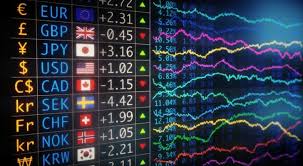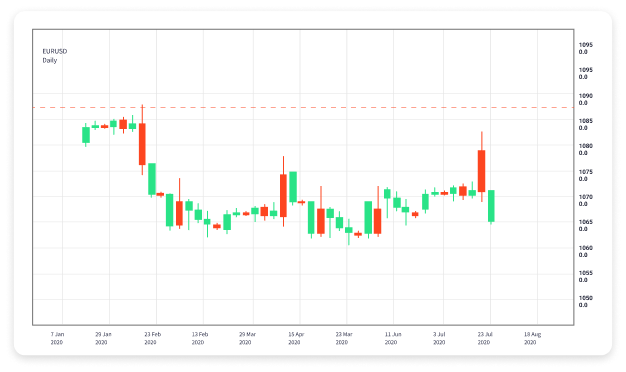
In the fast-paced world of trading, forex trading robots Saudi Arabia Brokers have seen a significant rise in the application of automated systems known as Forex trading robots. These sophisticated algorithms are designed to execute trades in the foreign exchange market, offering both novice and experienced traders a way to capitalize on opportunities without needing to be glued to their screens 24/7. This article delves into the evolution of Forex trading robots, their functionalities, advantages, and disadvantages, and what the future holds for these technological marvels.
What is a Forex Trading Robot?
A Forex trading robot is a software program that uses algorithms to analyze market data and execute trades on behalf of the user. These robots can operate independently or work alongside traders, helping them make informed decisions based on historical data and market trends. Typically, they are built on popular trading platforms like MetaTrader 4 or 5, where they employ a set of predefined rules and strategies to identify trading opportunities and manage risk.
The Evolution of Forex Trading Robots
Automated trading has come a long way from its inception. The first trading systems emerged in the late 20th century, primarily utilized by institutional investors. As technology advanced, the availability and accessibility of these systems increased. With the rise of personal computing and the internet, retail traders gained access to tools that were once exclusive to financial institutions.
The introduction of MT4 in the early 2000s marked a turning point for Forex trading robots. It allowed traders to develop their own automated strategies using the MQL language, fostering an environment where traders could share their creations and further innovate. Today, countless trading robots are available, ranging from simple trend-following systems to complex, multi-strategy trading algorithms.
How Do Forex Trading Robots Work?

Forex trading robots work by analyzing a variety of indicators, data points, and price movements to identify potential trades. They can assess market conditions such as volatility, momentum, and trends, applying complex mathematical models to predict future price movements. Once a trading opportunity is identified, the robot can execute buy or sell orders automatically based on its programmed rules.
Many robots utilize a combination of technical indicators, such as moving averages, Fibonacci retracement levels, and relative strength index (RSI) to make informed decisions. Additionally, some advanced robots are equipped with machine learning capabilities, allowing them to adapt to changing market conditions and optimize their strategies over time.
Benefits of Using Forex Trading Robots
The adoption of Forex trading robots comes with several key benefits, including:
- Automation: One of the primary advantages is the ability to automate trading processes. Traders can set their preferences and let the robot execute trades, which is especially useful for those with limited time or trading experience.
- Emotion-free Trading: Trading decisions driven by emotion can lead to poor judgment. Robots operate based on data and predefined strategies, eliminating emotional influences from the trading process.
- Speed and Efficiency: Forex trading robots can analyze vast amounts of data within seconds, allowing for quick decision-making. This speed can be critical in the fast-moving Forex market.
- Backtesting Capabilities: Most Forex robots allow traders to backtest their strategies using historical data, providing insights into how a strategy would have performed in the past.
Challenges and Drawbacks of Forex Trading Robots

While Forex trading robots offer numerous advantages, they are not without their challenges:
- Lack of Flexibility: Robots follow predefined rules and may struggle to adjust to unforeseen market events or sudden changes in volatility.
- Technical Issues: Trading platforms and algorithms can face technical malfunctions, leading to missed opportunities or losses if not monitored closely.
- Over-optimization: Some traders may fall into the trap of over-optimizing their robots for historical data, leading to poor performance in live trading environments.
- Cost: Quality trading robots may come with a hefty price tag, and there’s no guarantee of success, which can be a significant drawback for new traders.
Best Practices for Using Forex Trading Robots
To maximize the effectiveness of Forex trading robots, traders should consider the following best practices:
- Choose Wisely: Do thorough research before selecting a trading robot. Look for reviews, performance metrics, and transparency regarding the strategy it employs.
- Monitor Performance: Regularly monitor the robot’s performance and make adjustments as necessary. Even the best algorithms require oversight.
- Diversify: Avoid putting all your capital into a single robot or strategy. Diversifying across different systems can help mitigate risk.
- Stay Informed: Although robots can handle most aspects of trading, staying informed about market news and events can provide an edge in making better trading decisions.
The Future of Forex Trading Robots
As technology continues to evolve, the future of Forex trading robots looks promising. Developments in artificial intelligence and machine learning are expected to lead to even more sophisticated trading systems capable of analyzing complex market dynamics.
Additionally, the integration of blockchain technology may open new avenues for trading automation, enhancing security and transparency. As regulations around automated trading tighten, developers will also need to ensure that their robots comply, leading to better practices and safer trading environments.
Ultimately, the combination of human intuition and automated trading might represent the best approach for traders in the dynamic Forex market. Understanding how trading robots function, their benefits, and their limitations will empower traders to make informed choices in leveraging these tools to their advantage.
Conclusion
Forex trading robots have made a significant impact on the trading landscape, providing opportunities for traders to enhance their strategies and automate their processes. While they come with their set of challenges, the benefits they offer can be substantial when used correctly. As technology advances and the market evolves, staying informed and adaptable will be key for traders looking to harness the power of Forex trading robots effectively.

